How to Get Rid Of Bats
32 min read Updated for March, 2019
Fang-like teeth, large, rodent-like ears, erratic flight, and a face that somewhat resembles a chihuahua. Yes, bats may be eerie or scary (or both, take your pick), but that perception is a bit overblown. In reality, bats are quite benign and even shy.
If you’ve seen one or more near your property, it’s normal to have some concerns and view them as unwelcome. Though bats may qualify as nuisance pests, there are some simple ways to keep your home environment free of bats while letting them do their job—which is insect control.
First thing’s first, though. Do you know the characteristics of a bat?
32 min read Updated for March, 2019

Bat Sounds
There are none of the screeching or shrieking sounds from bats that Hollywood portrays. In fact, bats are very quiet using echolocation to navigate their surroundings, which—if human ears can pick up—comes across as clicking sound. If there are enough of them, you may hear them chirping at dusk.
Bat Tracks
As a flying mammal, it is very rare to come across bat tracks; bats are usually discovered by the telltale buildup of bat guano (droppings) on the side of the house of near holes and crevices.
Bat Poop
Bats tend to leave their waste in a pile near the entrance of their nesting spot, which is how you’ll know you have an issue. Bat droppings are similar in size to grain of rice, but longer and pretty much odorless. They don’t harden (like rodents) and may include undigested insects. But if crushed becomes powder, which allows for easier transmission of disease.
Identify
Physical Characteristics
The body of a bat is small (often less than six inches) and lined with colored fur. However, it’s the wingspan that is most distinctive, ranging from 10-16 inches and giving the bat its distinctive silhouette. Unlike its body, the wings of a bat are hairless and covered with rubbery skin. While popular culture depicts bats living in large groups and flying in swarms, the size of a bat colony can vary widely—from a single individual to a family to thousands.
The saying “blind as a bat” is also inaccurate since none of the more than 1,000 species of bats in the world are blind. The old adage owes to their unusual and fitful movement during flight. And the screeching and shrieking you hear from bats in movies and TV shows? Also false. When bats use echolocation to navigate their surroundings, human ears will only pick up clicking sounds.
Bats make up a quarter of the whole world’s mammals, and there are 40 species in the United States. In addition to their widespread habitats—found throughout the nation—all bats share certain physical traits.
If you see bats in or near your home, let’s discuss which kind you may be encountering.

Most Common Bats In The U.S.
The hard part about knowing which kind of bat you’re seeing is their nighttime activity and small size. Bats are difficult to watch clearly. That said, here’s some helpful information.
The bats most commonly seen in America belong to a category called microbats. Within that category, there are three main types. Here are the characteristics of each:
Big Brown Bats
- Body size of four or five inches
- Wingspan of 13-16 inches in length
- Reddish or copper-colored fur
- Capable of flying up to 40 mph
- Colonies range from small groups to hundreds of individuals
- Found throughout North America
Little Brown Bats
- Body size of two and a half to four inches
- Wingspan of 10 inches or less
- Glossy tan or dark brown fur
- Often seen near swampy, humid areas
Mexican Free-Tailed Bats
- Body size averages about three and a half inches
- Wingspan of roughly one foot
- Gray or brown fur
- Visible tails, unlike other bat species
- Noted for their large colonies
- Common to the Southwest U.S.
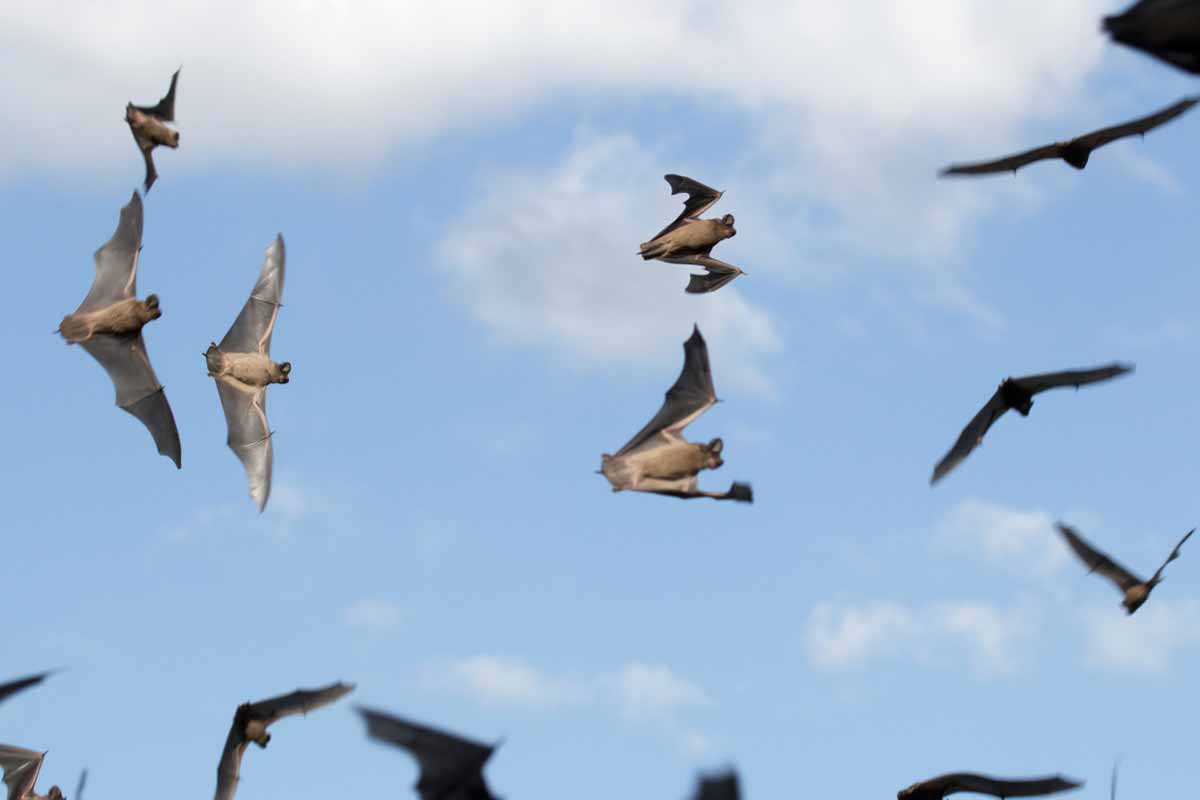
Treating Your Home For Bats
Pest removal professionals echo one another with this advice: There is no repellent chemical, spray, or device that works as well as exclusion and relocation of bats from your home. Here are a few products that help to remove bats from your house and keep them out.
Bat Problem?
Deforestation forces a bat to search for a new roost that offers similar light, temperature, and protection as it might find in the wild.
Common Locations
Bats are comfortable in a variety of environments including wetlands, fields, forests, cities, and suburbs. This means you can find bats in geographies throughout the nation. So, what’s the logic behind how they choose their habitats, and what does that mean for you as a homeowner?
They Prefer The Outdoors
Natural roosts, such as caves and trees, will always be a bat’s first choice. However, human development plays a role when forests are cleared away for homes or businesses, and caves are damaged or destroyed in mining operations. Deforestation forces a bat to search for a new roost that offers similar light, temperature, and protection as it might find in the wild. Thus, one or more bats may fly into a structure and feel right at home.
Entry Points On Your Home
The good news is, bats cannot enter your home on their own. They can’t create holes or crevices in wood, siding, or brick, and they cannot gnaw through building materials (unlike rodents). The bad news is, existing entry points or structural damage can give them enough space to fly inside. A bat can even get through an opening as small as half an inch. Typical entry points would include:
- Behind shutters
- Broken or torn screens
- Chimneys
- Open soffits
- Openings for pipes or wires
- Under eaves, siding, and shingles
- Vents
When proofing your home against bats, it’s helpful to walk around the exterior of your house and search for problem spots such as damaged screens, unexpected openings, warped areas where materials come together, or damage to the structure. You’ll see where the bats might enter and get something of a home improvement list at the same time.
The most telltale sign is the buildup of bat guano (droppings) on the side of the house or near holes and crevices, or even a brown discoloration nearby.
If you’re still having a hard time locating a bat’s entry point, consider holding a bat watch. Relax: This doesn’t involve staying up all night. It’s much easier and quicker than that.
For a bat watch, one person should stand on each side of your home near dusk. Late evening is the ideal time to spot bats as they leave the structure. Once you’ve found their exit point, you can concentrate your exclusion and relocation efforts in that area.
A quick trip to your local hardware store will equip you with the caulk or foam insulation needed to plug those areas. Filling up those areas prevents your home from becoming a shelter for bats when temperatures change. But take note: Covering these openings should be done near dusk when bats take flight. If done during daytime, you’re merely trapping them within your home.
You may even give thought to building an alternative home – known as a bat box – if you’ve seen more than one of these flying visitors.
One more note. Like any other animal, a bat will live near a food source. (Just as humans live near grocery stores.) If you dislike insects, a bat is your ally and may eat as many as 2,000 insects every night.
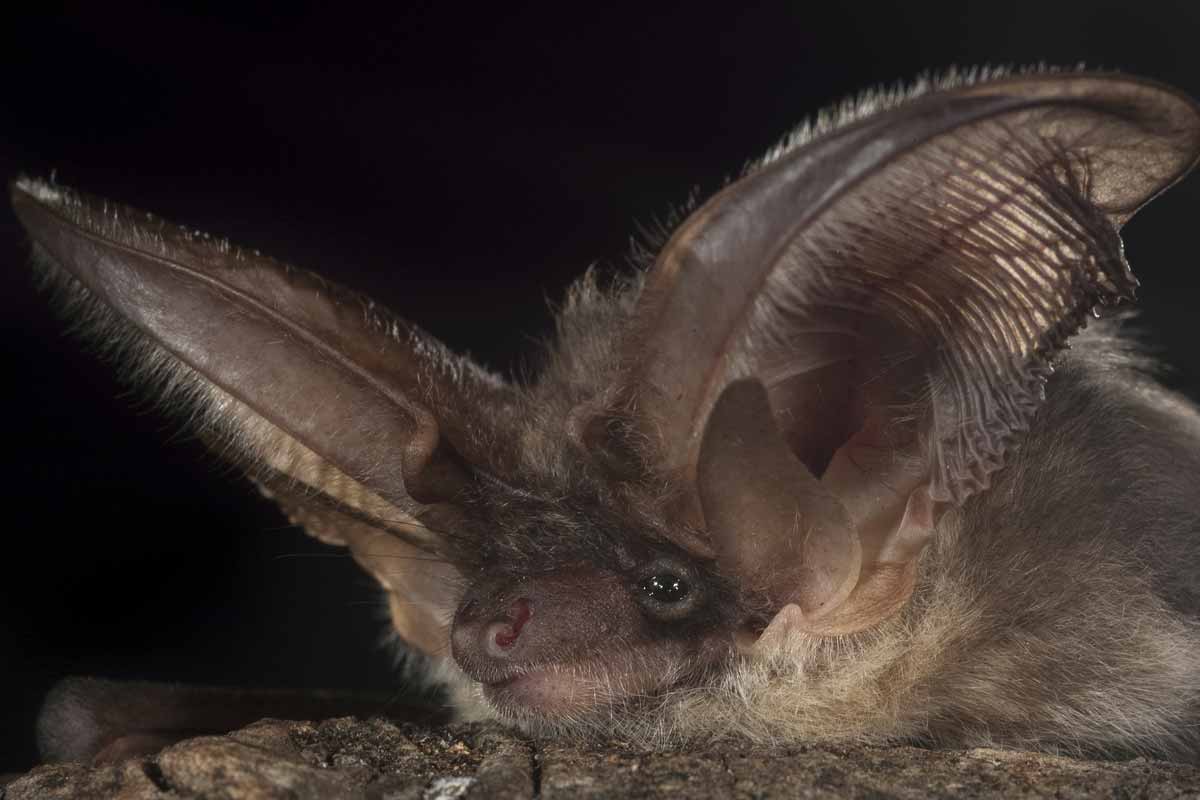
Pregnant females will search for places to care for their pups in buildings, tree cavities, and tree foliage.
Why Bats Chose Your Area
There are a couple of main reasons bats may be living nearby, and each reason is related to convenience:
Food Source
As mentioned, bats crave the taste of insects and will even capture them as they fly. So, where insects are plentiful—near bodies of water, forest clearings, farm fields, or around street lights—bats will enjoy a feeding.
A Spring And Summer Home
Bats awaken from hibernation in March and seek out summer roosts in early spring. Pregnant females will search for places to care for their pups in buildings, tree cavities, and tree foliage. Indoor roosting sites could include attic space, roof voids, porch eaves, and even storm drains. And remember: Any opening of half an inch or greater is all a bat needs for entry.
Bat Sounds
There are none of the screeching or shrieking sounds from bats that Hollywood portrays. In fact, bats are very quiet using echolocation to navigate their surroundings, which—if human ears can pick up—comes across as clicking sound. If there are enough of them, you may hear them chirping at dusk.
Bat Tracks
As a flying mammal, it is very rare to come across bat tracks; bats are usually discovered by the telltale buildup of bat guano (droppings) on the side of the house of near holes and crevices.
Bat Poop
Bats tend to leave their waste in a pile near the entrance of their nesting spot, which is how you’ll know you have an issue. Bat droppings are similar in size to grain of rice, but longer and pretty much odorless. They don’t harden (like rodents) and may include undigested insects. But if crushed becomes powder, which allows for easier transmission of disease.
Inspect
Should I Relocate This Animal?
The short answer is yes. Relocation is always better, and extermination is not a realistic option for two reasons. First, some states prohibit the killing of bats and allow exclusion only. Second, there are no chemicals licensed for use on bats in the U.S. The chemicals that kill bats are toxic to humans, too.
Opting for a catch-and-release method most likely won’t help. Bats have been proven to return to their roosts from hundreds of miles away. This is why the construction of an alternate roost makes sense. You encourage a bat to leave your home for another site made for its needs. No homeowner wants to expend a lot of time, energy, and money to relocate a pest. So what are the items needed to make this as simple as possible?
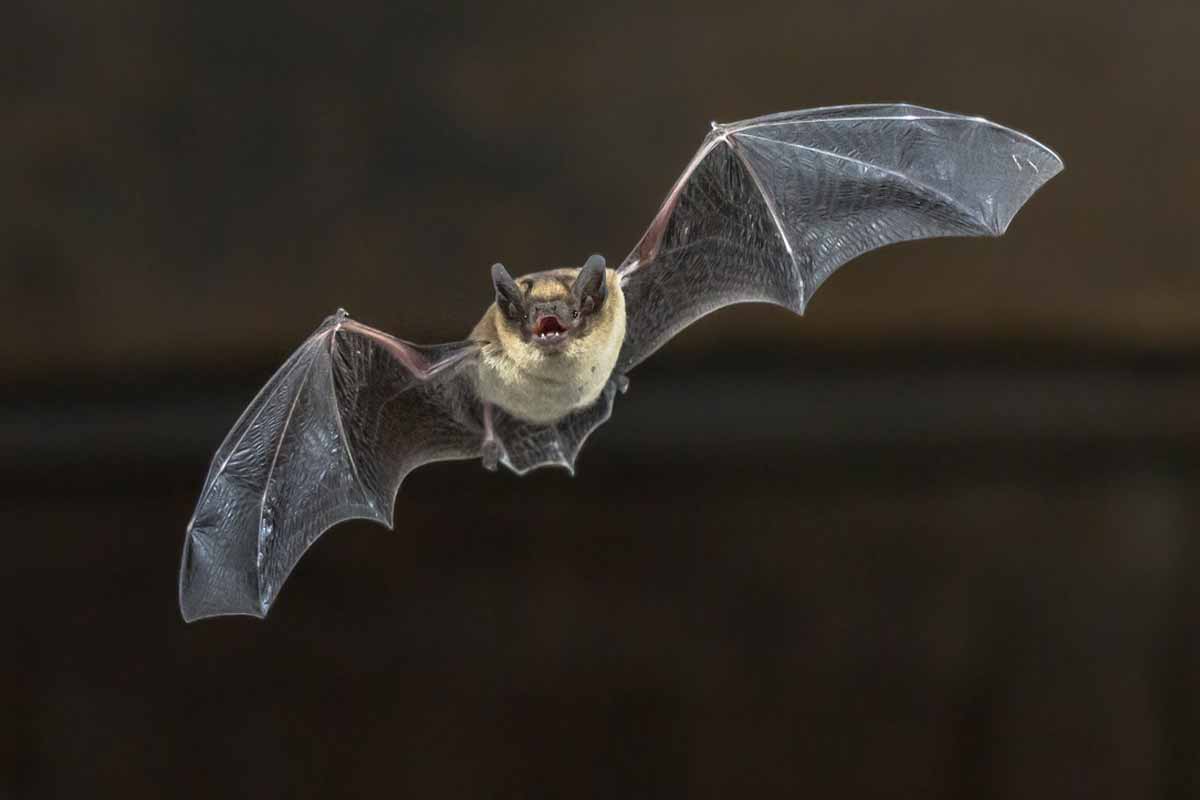
Treating Your Home For Bats
Pest removal professionals echo one another with this advice: There is no repellent chemical, spray, or device that works as well as exclusion and relocation of bats from your home. Here are a few products that help to remove bats from your house and keep them out.
Bat Problem?
When you do release the bat, don’t place the container on the ground.
How-to Steps For DIY Removal
This section only applies when a single bat has entered your home. For measures to remove multiple bats or prevent them from returning to your home, see “Prevention Methods” below.
When a bat finds itself inside your house, it’s obviously an accident—and the bat wants out immediately! But how do you handle this unusual and unwanted visitor?
Control the room itself. Begin by opening a window or exterior door, and close doors to adjoining rooms. Turn off the ceiling light and turn on the lights. After these steps, the bat may locate the exit on its own (remember, it’s not blind).
If this isn’t enough, you’ll need to capture the bat for release outside—and this is easier than you might expect. You will need three items, though: a pair of leather gloves, a shoebox or other container of similar size, and a large envelope or piece of cardboard.
If the bat has landed on a surface, approach and cover it with the shoebox, this prevents the animal from taking flight.
Then slide the cardboard or envelope underneath the shoebox. Now you have the animal confined. If this occurs during daytime, place the box in a safe, quiet place so you can release the bat after nightfall.
When you do release the bat, don’t place the container on the ground. Place it on its side so the bat can easily climb out onto a tree limb or a second story deck.
By helping a bat return outdoors, you help it return to its natural role as a consumer of insects (that includes mosquitoes).
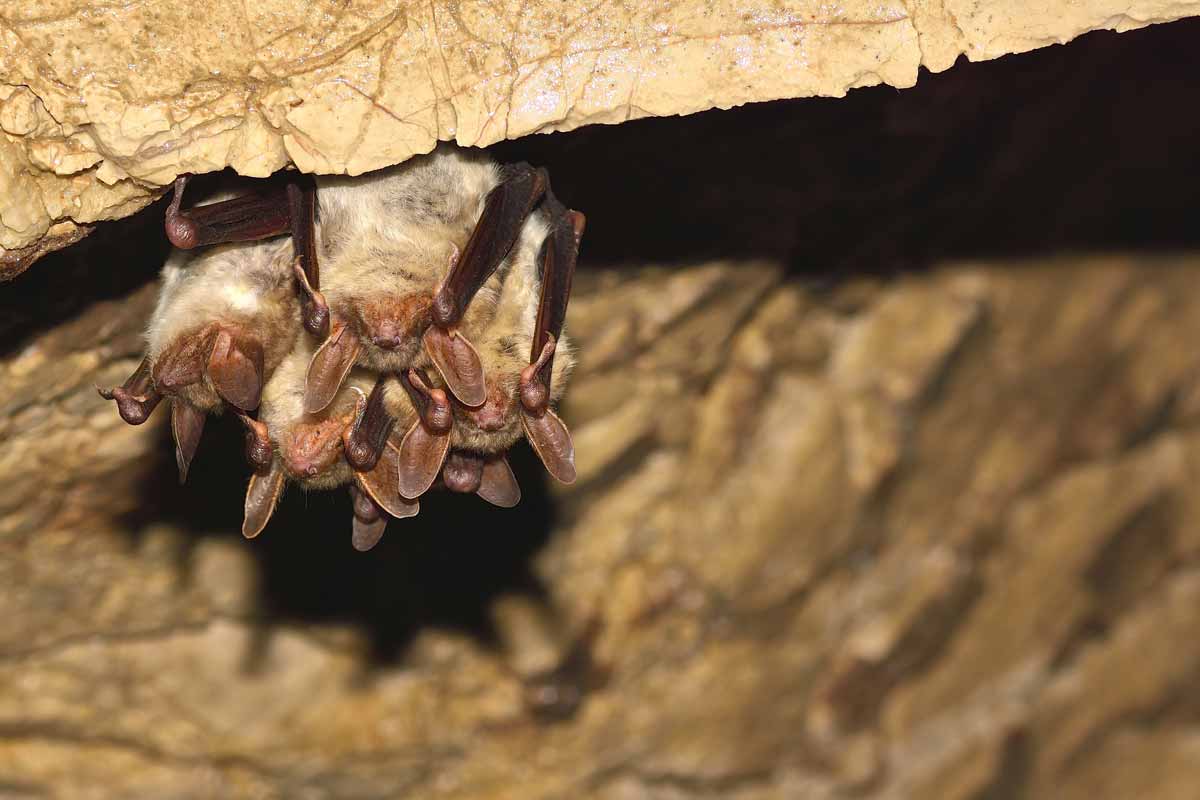
Bats are not known to be aggressive.
Risks Of Disease
Though it’s possible for a bat’s bite or its infected saliva to carry rabies to humans, the chances are quite rare. Pennsylvania State University reported that the incidence of rabies in healthy bats was less than one percent. However, sick, dead, or injured bats were more likely to be reported.
Bats are not known to be aggressive. If your parents ever said, “It’s more afraid of you than you are of it” when referring to certain pests, that certainly applies to bats. Plus, those that do carry rabies die quickly from the disease.
Nonetheless, in the unlikely case of a bite from a bat or any infected mammal, you should seek medical treatment. Other common-sense practices include:
- Bats should never be handled by your bare hands. If you encounter a grounded bat, wear leather gloves to guard against a potential bite.
- Vaccinate your pets against rabies.
- Advise children never to handle pests or rodents in the wild.
It’s worth noting that you cannot contract rabies through contact with bat guano (droppings), blood or even a bat’s urine.
Bat Sounds
There are none of the screeching or shrieking sounds from bats that Hollywood portrays. In fact, bats are very quiet using echolocation to navigate their surroundings, which—if human ears can pick up—comes across as clicking sound. If there are enough of them, you may hear them chirping at dusk.
Bat Tracks
As a flying mammal, it is very rare to come across bat tracks; bats are usually discovered by the telltale buildup of bat guano (droppings) on the side of the house of near holes and crevices.
Bat Poop
Bats tend to leave their waste in a pile near the entrance of their nesting spot, which is how you’ll know you have an issue. Bat droppings are similar in size to grain of rice, but longer and pretty much odorless. They don’t harden (like rodents) and may include undigested insects. But if crushed becomes powder, which allows for easier transmission of disease.
Prevent
Prevention Methods
There are several ways to bat-proof your home with materials that will fit in with the look of your residence. After you’ve done a visual inspection of your home and taken an inventory of entry points for bats, consider these items.
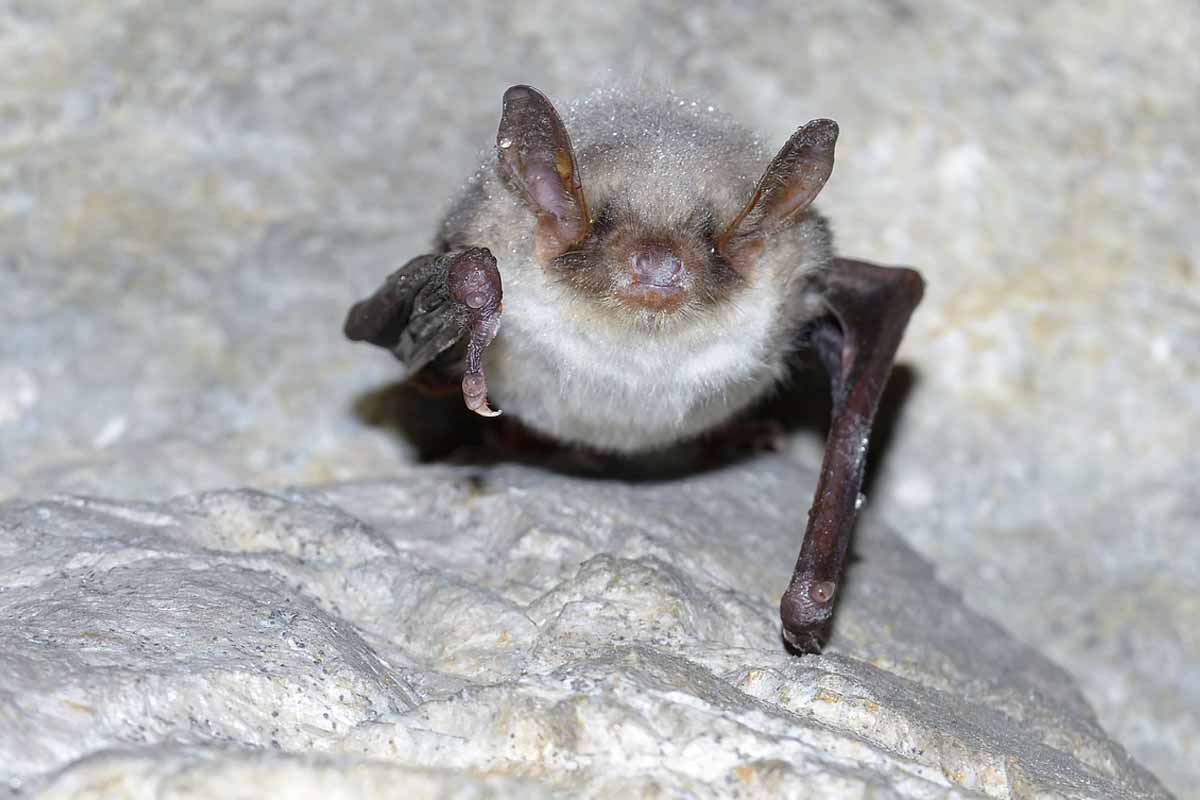
Bat Box
Built to keep bats away from the inside of your home, a bat box is a wooden enclosure that provides a roost. Typically, the box can be attached to a building—about 10-15 feet above ground—or placed on a pole within about 10 yards of your home with at least three feet of open space underneath for ease of entry and exit. However, you’ll want to keep away from areas that receive foot traffic or anywhere that dropping will cause an issue. Timing is also a critical factor in making the bat box successful, and you need to keep the seasons in mind.
- Between January and April, install the box in a spot that receives at least seven hours of sunlight.
- From May through August, allow the bats to remain in the building but do a careful study of their entry and exit points. You’ll get the best sightings if you watch for the bats near dusk.
- From September to April, seal the openings you noticed on the exterior. Doing so encourages the bats to find a new roost, which should be the bat box.
As a guideline, the bat box should measure seven inches deep, 24 inches wide, and 12-24 inches high. This provides enough space for a maternity colony.
Treating Your Home For Bats
Pest removal professionals echo one another with this advice: There is no repellent chemical, spray, or device that works as well as exclusion and relocation of bats from your home. Here are a few products that help to remove bats from your house and keep them out.
Bat Problem?
For the best outcome, make sure the mesh covers the hole or entry point and extends three feet below.
One-Way Door
This simple wire mesh device allows bats to exit your home and denies them re-entry. Clever, right?
One-way doors usually come fully assembled and take only minutes to fasten to an exterior wall using wire cutters (to adjust the size as needed) and staples or duct tape. You’ll experience better results with quarter-inch mesh given that bats are quite small, and their young are even smaller.
For the best outcome, make sure the mesh covers the hole or entry point and extends three feet below. The device should extend outward from the wall about three to six inches to allow for the bat’s movement.
Secure the one-way door with staples or duct tape that will resist weather since it should remain in place for at least three to four days. Afterward, you can remove the device and seal the opening.
A note about timing: As with a bat box, don’t install a one-way door during the spring or summer (especially between May and August). Doing so will trap young bats inside your home where they will die. Then you’ll have to deal with their decaying bodies and a very foul smell.
Caulking
As a home ages and settles, crevices begin to form. Seasonal weather affects this as high temperatures during summer cause cracks in wood to widen. As these cracks expand, a filler compound called oakum may be necessary before you apply the caulk to wood. Oakum is a tarred-hemp fiber typically used to seal the bodies of ships, and it’s easy to press in place by hand.
As you prepare to caulk over the openings, think about what kind to use. Latex, butyl, and acrylic have a durability of about five years, and you can paint any of them. Silicone rubber may last even longer, expanding and contracting with the weather, but paint will not adhere to some kinds of rubber. Self-expanding foam may be messy to apply but will spread to fill the space. However, this solution will weather, and it is used best in deep holes and interiors.

Flashing is made of galvanized metals, copper, aluminum, and stainless steel and serves as a sealer of joints, cracks, and crevices in buildings.
Weatherstripping
This easy-to-install method prevents entry for bats and other rodents by sealing the area between the floor and the bottom of a door. A nylon strip brush barrier offers another option, with bristles that move in any direction and even work with carpet. This kind of barrier also stops drafts and reduces heat loss.
The third choice in this category would be a simple draft excluder. Draft excluder may sound like a technical term, but this device is very common, and you’ve likely seen it many times. With a profile that looks like a long, sausage-shaped cloth tube filled with sand, an excluder can easily attach to the bottom of a door.
Flashing
With a background that dates to the 1960s, flashing has a substantial history as a reliable material for waterproofing a structure. It’s also quite useful for keeping pests out of your home.
Flashing is made of galvanized metals, copper, aluminum, and stainless steel and serves as a sealer of joints, cracks, and crevices in buildings. A self-sealing form of flashing called flashband has shown remarkable flexibility and a grip that stays strong in all weather.
Screening
Yet another simple solution that can be quite effective for your home. You must keep in mind, though, baby bats are tiny animals, so buy your mesh accordingly. Look for quarter-inch mesh to serve the purpose.
Heating and air conditioning registers are easy entry points. If you purchase hardware cloth for a register, choose an eight by eight mesh. The location of the register and air flow will determine how attractive that space is to bats.
An old or unused chimney also provides a likely roost for bats. If your home features such a chimney, consider a bird screen or spark arrester as a deterrent to bats searching for a home. This item should be rust-resistant and carefully installed. You should also make sure you close your damper when the chimney is not in use.
If that sounds more labor-intensive than needed, fiberglass screening may offer a quicker fix. Simply push strips of the screening into entry holes and finish off the area with a sealant.
Bat Sounds
There are none of the screeching or shrieking sounds from bats that Hollywood portrays. In fact, bats are very quiet using echolocation to navigate their surroundings, which—if human ears can pick up—comes across as clicking sound. If there are enough of them, you may hear them chirping at dusk.
Bat Tracks
As a flying mammal, it is very rare to come across bat tracks; bats are usually discovered by the telltale buildup of bat guano (droppings) on the side of the house of near holes and crevices.
Bat Poop
Bats tend to leave their waste in a pile near the entrance of their nesting spot, which is how you’ll know you have an issue. Bat droppings are similar in size to grain of rice, but longer and pretty much odorless. They don’t harden (like rodents) and may include undigested insects. But if crushed becomes powder, which allows for easier transmission of disease.
When to Call A Professional
While most DIY methods of bat removal or relocation, instead of extermination, will lead to a successful outcome, you might chance upon a situation that requires specialized help. There are two cases in which you would need an expert opinion.
First, if a bat has given birth to its young inside your home—perhaps inside the walls or in your attic—they will return to the space thinking your home is theirs now, too. No repellent or deterrent device will change their minds.
Second: if you find a bat on the ground, or in an exposed area during daylight hours, do not handle it. What you may have found is a diseased, injured, or dying bat. A wildlife specialist can help you determine the best solution in this instance, due to the possibility of disease (think rabies).
What if you don’t want to pursue a DIY solution? Local resources are likely available. Contact your local government’s wildlife control office or reach out to a company that offers that service.
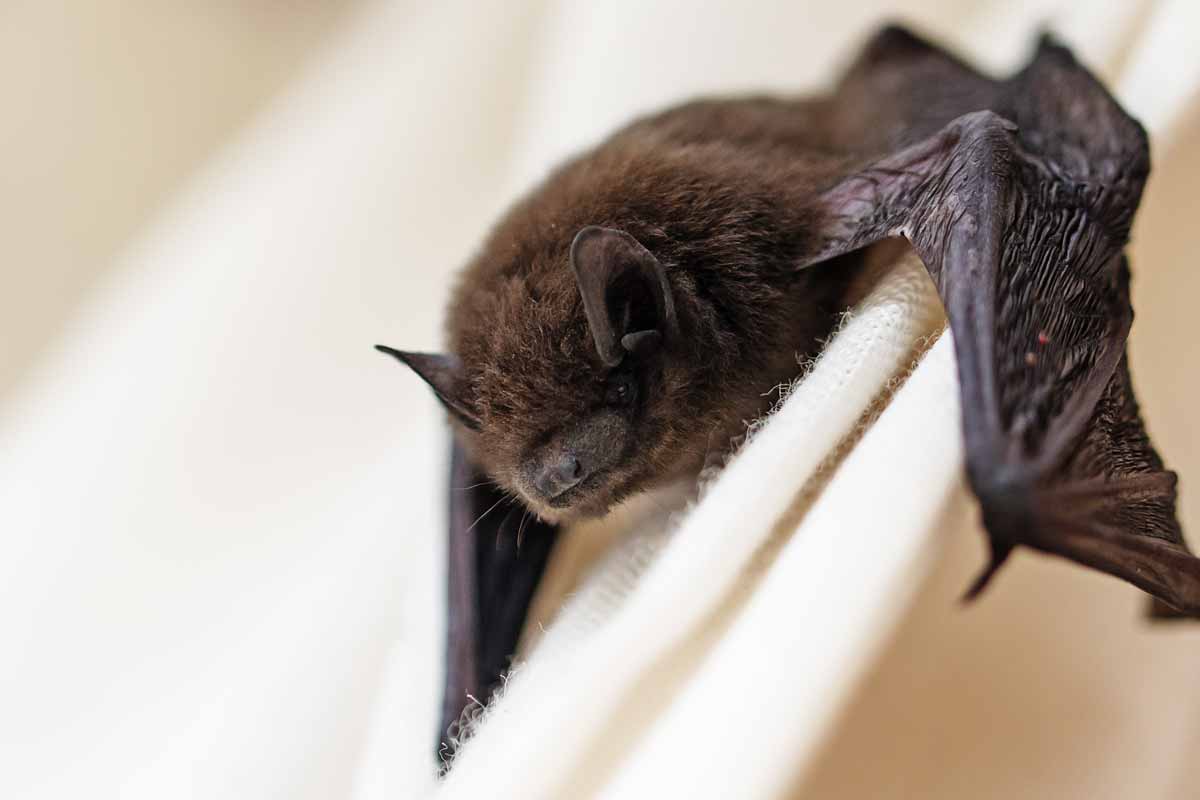
Sources
https://www.crittercontrol.com/services/bats/what-does-a-bat-look-like
http://www.humanesociety.org/animals/bats/tips/bat_habitat_bat_houses.html “Providing Habitat for Bats: Natural Spaces and Bat Houses”
http://www.animalatticpest.com/batrepellent.html
https://extension.psu.edu/bats “Bats”
https://www.bobvila.com/articles/how-to-get-rid-of-bats/
https://batmanagement.com/blogs/bat-exclusion-control/why-bats-become-a-problem-and-what-is-a-bat-exclusion
http://www.umich.edu/~esupdate/library/96.04-05/bogan.html
https://www.crittercontrol.com/services/bats/types-of-bats
https://www.nps.gov/shen/learn/nature/big-brown-bat.html
http://www.batcon.org/resources/for-specific-issues/bats-in-buildings/removing-a-single-bat
http://www.isubatcenter.org/conservation/
Treating Your Home For Bats
Pest removal professionals echo one another with this advice: There is no repellent chemical, spray, or device that works as well as exclusion and relocation of bats from your home. Here are a few products that help to remove bats from your house and keep them out.
Bat Problem?
Sources
http://www.animalatticpest.com/noises.html
http://www.animalatticpest.com/feces.html
Bat Sounds
There are none of the screeching or shrieking sounds from bats that Hollywood portrays. In fact, bats are very quiet using echolocation to navigate their surroundings, which—if human ears can pick up—comes across as clicking sound. If there are enough of them, you may hear them chirping at dusk.
Bat Tracks
As a flying mammal, it is very rare to come across bat tracks; bats are usually discovered by the telltale buildup of bat guano (droppings) on the side of the house of near holes and crevices.
Bat Poop
Bats tend to leave their waste in a pile near the entrance of their nesting spot, which is how you’ll know you have an issue. Bat droppings are similar in size to grain of rice, but longer and pretty much odorless. They don’t harden (like rodents) and may include undigested insects. But if crushed becomes powder, which allows for easier transmission of disease.


